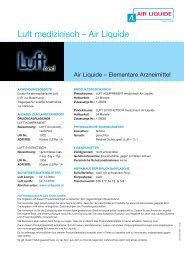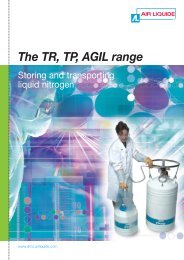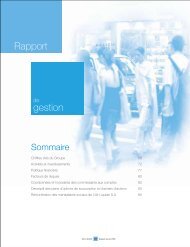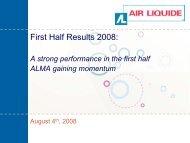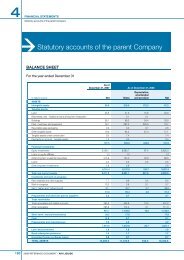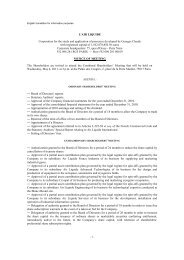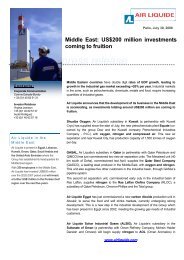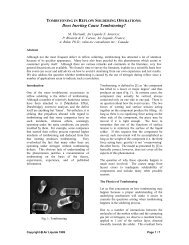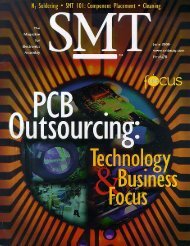Inert Soldering With Lead-Free Alloys: Review and Evaluation
Inert Soldering With Lead-Free Alloys: Review and Evaluation
Inert Soldering With Lead-Free Alloys: Review and Evaluation
Create successful ePaper yourself
Turn your PDF publications into a flip-book with our unique Google optimized e-Paper software.
Gas manufacturers<br />
Gas manufacturers generally admit that using<br />
nitrogen should be done selectively <strong>and</strong> based on<br />
process criterias. One particular benefit could be that<br />
nitrogen use for lead-free solder systems could allow<br />
soldering to be performed at just a few degrees above<br />
the solder melting point. 7 The objective being to<br />
reduce the heat stress seen by the component which is<br />
now among the predominant issues of lead-free<br />
soldering.<br />
This is also supported by an example where six leadfree<br />
solders were tested with a clear focus on the<br />
"Superheat Temperature” (ST). 8 The ST can be<br />
defined as the difference between the melting point<br />
of the alloy <strong>and</strong> the process temperature used to<br />
solder it. Again, it is concluded that nitrogen can<br />
reduce the ST for reflow, therefore allowing for a<br />
reduction in the proposed increase in soldering<br />
temperature required with lead-free solders.<br />
Flux <strong>and</strong> Solder Paste Manufacturers<br />
These companies are directly on the forefront of the<br />
lead-free issue <strong>and</strong> most of the published data on this<br />
topic is coming from them. Various publications, as<br />
well as commercial technical brochures, generally<br />
indicate that flux <strong>and</strong> solder pastes are formulated to<br />
give good results with both air <strong>and</strong> nitrogen. Nitrogen<br />
atmosphere must be avoided [for cost reasons] but it<br />
might not always be possible. 9<br />
Others focus on the poor wetting properties generally<br />
encountered with lead-free alloys but state that the<br />
interest of nitrogen is marginal. 10 A slightly different<br />
opinion is to recognize that increased oxidation<br />
promotes nitrogen use, but then insist that for their<br />
own flux formulations, nitrogen is an advantage but<br />
is not essential. 11 Some opinions are more openly in<br />
favor of nitrogen stressing the poor wetting properties<br />
of the Sn/Ag/Cu series of alloys with commercial <strong>and</strong><br />
especially no-clean fluxes, 12 or insisting on the<br />
possibility of using nitrogen to avoid cleaning<br />
issues. 13 A difference has to be made between reflow<br />
<strong>and</strong> wave soldering for which the nitrogen benefit of<br />
the former is apparently not discussed. 14<br />
Other interesting technical opinions encountered<br />
include: flux residues oxidizing during processing in<br />
air to a state where they are difficult to clean vs. N2, 9<br />
nitrogen being used successfully for hot gas repair,<br />
<strong>and</strong> nitrogen reducing oxidation simplify the process<br />
control. 15 Nitrogen is also recommended in zincbearing<br />
solders. 16<br />
Equipment Manufacturers<br />
Publications by these companies in the lead-free area<br />
are less common. One study did find the opinion of a<br />
manufacturer who is clearly in favor of nitrogen. 17<br />
The main argument is that given the fact that we do<br />
SM2-3 3<br />
not want to use active fluxes <strong>and</strong> subsequent<br />
cleaning, the quality of the nitrogen atmosphere may<br />
become even more important for Pb-free alloys than<br />
it has been with the st<strong>and</strong>ard Sn/Pb solder.<br />
The same source also emphasizes the efforts made<br />
recently to lower the nitrogen consumption of reflow<br />
ovens <strong>and</strong> wave soldering machines. Figures are<br />
given to obtain a ROL of 150ppm. The typical<br />
consumption is now below 27Nm 3 /h (1000 scfh) in<br />
reflow rather than the 55–80 Nm 3 /h (2000-3000 scfh)<br />
commonly encountered in older N2-capable reflow<br />
ovens.<br />
Users<br />
Many assemblers are spending time testing lead-free<br />
solutions on part of their own production. For evident<br />
reasons, data is not willingly shared or published.<br />
Nevertheless, some indications can be found in the<br />
published material.<br />
The majority of assemblers try to work without<br />
nitrogen for cost reasons. 11 Important R&D efforts<br />
have especially been made in Japan to obtain<br />
acceptable results using air, even in adverse<br />
conditions with Zinc containing solders. 18 However,<br />
others that have tried nitrogen have disclosed their<br />
experience concluding to the necessity to use inert<br />
atmosphere for telephone assemblies. 19<br />
Professional Organizations <strong>and</strong> Research<br />
InstitutesFor these organizations, under less<br />
commercial pressure, the opinion is more widely in<br />
favor of nitrogen inerting for wave as well as for<br />
reflow. “Nitrogen inerting may become of critical<br />
importance in the future with the uptake of lead-free<br />
alloys.” 20 Several sources report that the use of a<br />
nitrogen atmosphere can allow a reduction in the<br />
peak soldering temperature, 2,21 thus confirming that<br />
inert soldering is a possible way to address the issue<br />
of higher temperatures in lead-free soldering.<br />
The use of nitrogen is also specifically stressed for<br />
complex boards with a high thermal dem<strong>and</strong> <strong>and</strong> a<br />
large range of temperatures across the board. 20 Is it<br />
also stressed for varying finishes <strong>and</strong> thermal<br />
requirements. 2 For such boards, nitrogen is<br />
recommended.<br />
The Cost Issue<br />
It is generally agreed that lead-free implementation<br />
will unavoidably result in an increase of production<br />
costs. It might be interesting to analyze this cost<br />
increase in order to work to minimize it. In one<br />
example, 11 a simulation shows that the cost of the<br />
soldering material is less than 0.1% of the cost of the<br />
electronic end product. In fact, utilities or nitrogen<br />
are typically less than 0.1% of the finished product<br />
cost.



